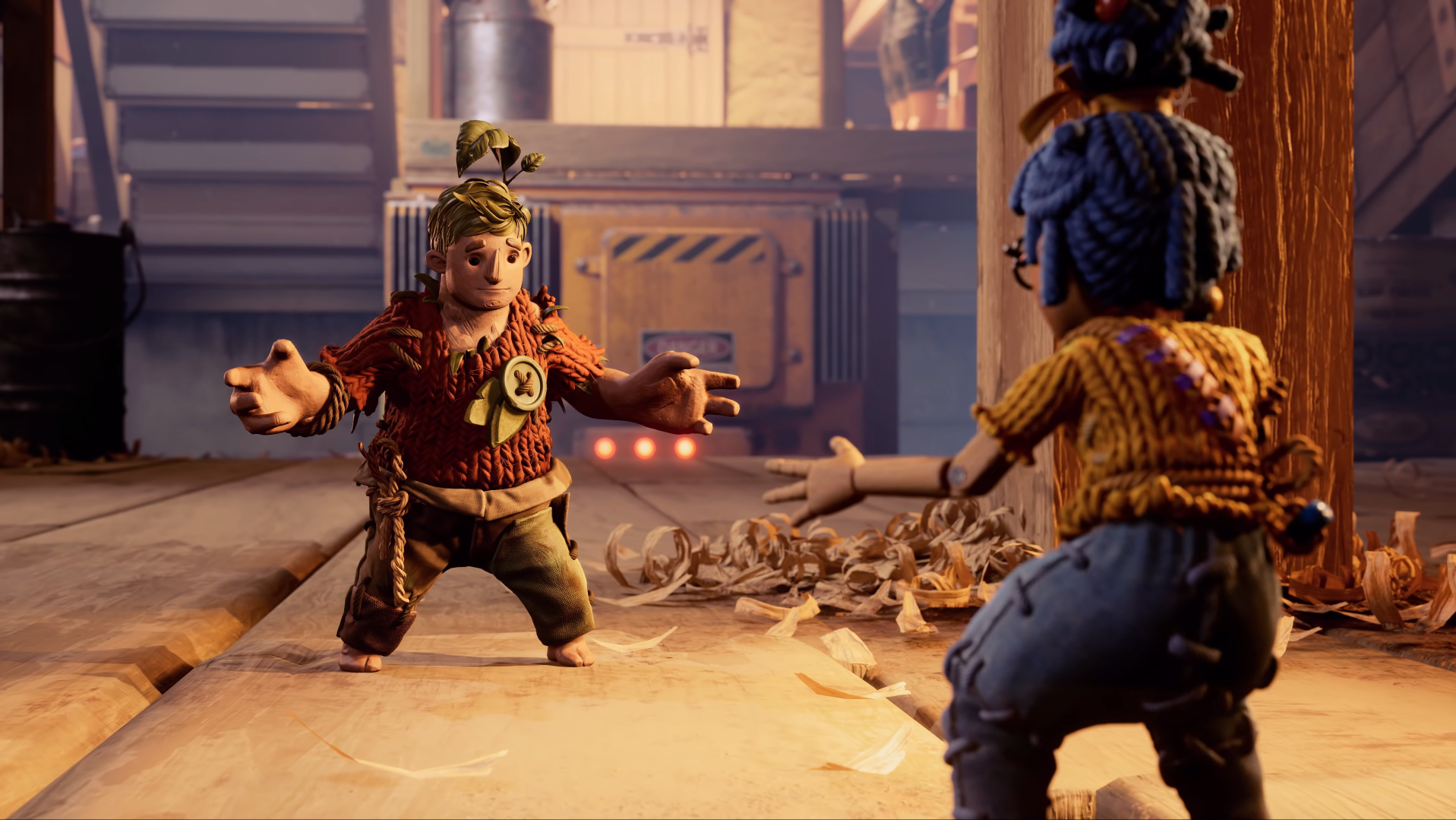Embark on an extraordinary journey with story 2 player games, where compelling narratives and engaging gameplay mechanics intertwine to create an unforgettable experience. Immerse yourself in cooperative adventures, competitive challenges, and adversarial scenarios as you delve into the depths of storytelling designed specifically for two players.
Story 2 player games offer a unique blend of gameplay and storytelling, where character development, dialogue, and pacing are meticulously crafted to support the two-player experience. Whether you’re solving puzzles together, engaging in thrilling battles, or simply exploring the world side-by-side, these games provide a shared narrative that fosters connection and creates lasting memories.
Game Features

Two-player story games stand out from other multiplayer experiences by offering unique gameplay mechanics that foster collaboration and competition. These games often incorporate innovative game modes and narrative structures that enhance the storytelling and player engagement.
Cooperative Gameplay
- Shared Goals:Players work together to achieve a common objective, such as solving puzzles, completing missions, or defeating enemies.
- Role Specialization:Players take on specific roles within the game, each with unique abilities and responsibilities, requiring them to coordinate and communicate effectively.
- Asymmetrical Gameplay:One player may control a character with different abilities or perspectives from the other, creating a unique and challenging dynamic.
Competitive Gameplay
- Head-to-Head Battles:Players compete directly against each other in various game modes, such as racing, fighting, or puzzle-solving.
- Turn-Based Strategy:Players take turns making strategic decisions, anticipating their opponent’s moves and adapting their tactics accordingly.
- Hidden Information:Players may have limited knowledge of their opponent’s actions or intentions, creating an element of suspense and uncertainty.
Narrative Enhancement
- Branching Storylines:Player choices and actions influence the narrative, leading to different outcomes and endings.
- Multiple Perspectives:Players experience the story from different characters’ perspectives, providing a richer and more nuanced understanding of the events.
- Dynamic Dialogue:Player interactions with non-player characters (NPCs) adapt to their choices and actions, shaping the narrative in real-time.
Storytelling Techniques
In the realm of 2-player story games, storytelling techniques take on a unique form, catering to the intimate and collaborative nature of the experience. By employing effective character development, dialogue, and pacing, these games craft compelling narratives that resonate deeply with both players.
Character Development
In 2-player story games, character development is paramount. Each player embodies a distinct character with their own motivations, beliefs, and histories. The game’s narrative hinges on the dynamic interplay between these characters, their evolving relationships, and the choices they make.
- Shared Backstories:By sharing elements of their characters’ pasts, players forge a sense of connection and establish a foundation for their relationship.
- Contrasting Perspectives:Players’ characters often hold opposing viewpoints, creating tension and driving the narrative forward.
- Character Growth:As the game progresses, characters evolve and change, influenced by their interactions with each other and the choices they make.
Dialogue
Dialogue is the lifeblood of 2-player story games. It allows players to express their characters’ thoughts, feelings, and intentions, and to shape the narrative in real time.
- Naturalistic Language:Dialogue in these games is typically naturalistic and conversational, reflecting the spontaneity and intimacy of the gameplay.
- Choice-Based Dialogue:Players often have the opportunity to choose from a range of dialogue options, allowing them to influence the flow of the conversation and the narrative.
- Emotional Depth:Dialogue in 2-player story games often explores complex emotions and relationships, creating a deep and immersive experience for players.
Pacing, Story 2 player games
Pacing is crucial in 2-player story games. The game’s narrative must unfold at a pace that allows players to fully engage with the characters and the story, while maintaining a sense of urgency and suspense.
- Flexible Structure:The narrative structure of these games is often flexible, allowing players to explore different paths and make choices that affect the pacing.
- Tension and Release:The game’s narrative typically alternates between moments of tension and release, keeping players engaged and invested.
- Climax and Resolution:The climax and resolution of the story are carefully crafted to provide a satisfying conclusion while leaving room for interpretation and discussion.
Balancing individual player perspectives within a shared narrative is a unique challenge in 2-player story games. By employing effective storytelling techniques, these games create compelling narratives that resonate with both players, leaving a lasting impression on their minds and hearts.
Player Interaction
In 2-player story games, player interaction is a crucial element that shapes the gameplay experience. It can take various forms, each contributing to the game’s overall narrative and atmosphere.
Cooperative scenarios, where players work together towards a common goal, foster a sense of camaraderie and shared accomplishment. Games like “It Takes Two” and “Portal 2” showcase the effectiveness of cooperative gameplay, where players must coordinate their actions and problem-solve together.
Competitive Scenarios
Competitive scenarios, on the other hand, introduce an element of rivalry between players. In games like “Street Fighter” and “Mario Kart,” players compete against each other for victory, creating a sense of excitement and challenge. Competition can also encourage players to improve their skills and strategies.
Adversarial Scenarios
Adversarial scenarios take competition a step further, pitting players against each other in a battle of wits or resources. Games like “Among Us” and “Betrayal at House on the Hill” feature adversarial gameplay, where players assume hidden roles and try to outmaneuver or deceive each other.
Player interaction in 2-player story games not only influences the gameplay but also has a significant impact on the psychological and social dynamics between players. Cooperative scenarios can strengthen bonds and foster a sense of trust, while competitive and adversarial scenarios can create tension and rivalry.
These dynamics add depth and complexity to the gameplay experience, making it both engaging and emotionally resonant.
Game Design: Story 2 Player Games
The design principles of 2-player story games differ from those of single-player and multiplayer games in several key ways. The following table compares and contrasts these design principles:
| Element | Single-Player Games | 2-Player Story Games | Multiplayer Games |
|---|---|---|---|
| Level Design | Linear or open-world, designed to accommodate one player’s actions and choices. | Designed to facilitate cooperative or competitive interactions between two players, often with branching paths and puzzles. | Designed to accommodate multiple players, often with large-scale maps and complex objectives. |
| Pacing | Controlled by the player, who can progress at their own pace. | Must be carefully balanced to ensure both players have equal opportunities to participate and contribute. | Often fast-paced and chaotic, with players competing for resources or objectives. |
| Difficulty Balancing | Tuned to the skill level of a single player. | Must be carefully balanced to ensure both players are challenged but not overwhelmed. | Often designed with multiple difficulty levels to accommodate players of varying skill levels. |
Examples of 2-player story games that illustrate these design principles include:
- Portal 2(cooperative): Features branching paths and puzzles that require both players to work together.
- Super Mario 3D World(competitive): Offers a variety of competitive modes that encourage players to race or battle against each other.
Genre and Setting
Two-player story games offer a diverse range of genres and settings, each shaping the narrative, gameplay, and player experience.
From thrilling action-adventure to mind-bending puzzle-solving and immersive role-playing, the genre and setting play a crucial role in defining the game’s tone, atmosphere, and gameplay mechanics.
Action-Adventure
- Often characterized by fast-paced combat, exploration, and puzzle-solving.
- Examples: Unravel Two, It Takes Two
Puzzle-Solving
- Focuses on cooperative problem-solving, requiring players to work together to overcome obstacles and progress through the game.
- Examples: Portal 2, We Were Hereseries
Role-Playing
- Immersive experiences where players create and develop their own characters within a rich and detailed world.
- Examples: Divinity: Original Sin 2, Baldur’s Gate 3
Visual and Audio Elements

Visual and audio elements play a crucial role in enhancing the storytelling and gameplay of 2-player story games. These elements contribute to the atmosphere, mood, and immersion of the players, making the experience more engaging and memorable.
Art style, character design, and sound effects are essential components that work together to create a cohesive and impactful gaming experience. These elements can evoke emotions, convey information, and set the tone for the game’s narrative.
Art Style
The art style of a game establishes the visual identity and sets the mood for the storytelling. Different art styles can convey different emotions and themes, ranging from whimsical and lighthearted to dark and atmospheric.
- For example, the vibrant and colorful art style of “It Takes Two” complements its whimsical and lighthearted gameplay, creating a sense of joy and adventure.
- In contrast, the dark and gritty art style of “Hellblade: Senua’s Sacrifice” immerses players in a haunting and oppressive world, reflecting the protagonist’s inner turmoil.
Character Design
Character design is another important aspect that contributes to the storytelling. The visual appearance of characters can convey their personalities, motivations, and relationships with each other.
- “The Last of Us Part II” features highly detailed and expressive character models that convey a range of emotions and relationships, enhancing the game’s emotional impact.
- In “Unravel Two,” the two yarn characters have distinct designs that reflect their contrasting personalities, making them relatable and endearing to players.
Sound Effects
Sound effects play a vital role in creating an immersive and engaging gaming experience. They can enhance the atmosphere, convey important information, and trigger emotional responses.
- In “Ori and the Blind Forest,” the use of ambient sounds and environmental cues helps create a sense of depth and immersion, making the forest come alive.
- “Journey” utilizes a minimalist soundtrack that perfectly complements the game’s emotional journey, evoking feelings of wonder, solitude, and companionship.
Final Summary

In the realm of story 2 player games, the possibilities are boundless. From action-packed adventures to mind-bending puzzles, there’s a game to suit every taste. The captivating narratives, innovative gameplay mechanics, and immersive visual and audio elements combine to create a truly unforgettable experience.
Whether you’re a seasoned gamer or a newcomer to the world of cooperative storytelling, story 2 player games offer an unparalleled opportunity to connect with a friend and embark on an extraordinary journey together.
Common Queries
What are the key features of story 2 player games?
Story 2 player games feature unique gameplay mechanics that enhance cooperative or competitive play, innovative game modes or narrative structures, and a focus on storytelling and player engagement.
How do story 2 player games balance individual player perspectives?
Story 2 player games carefully craft character development, dialogue, and pacing to support the two-player experience, ensuring that both players feel invested in the narrative and have opportunities to contribute to the story.
What are some common genres and settings explored in story 2 player games?
Story 2 player games span a wide range of genres, including action-adventure, puzzle-solving, role-playing, and more. They often feature diverse settings, from fantasy worlds to modern cities, that influence the narrative, gameplay, and player experience.